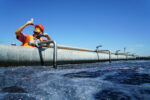Fresh water; fresh ideas. Can renewable energy be the future of desalination?
We are running out of drinking water.
Agriculture, industry, urbanization and population growth, are all increasing demand; climate change is decreasing supply. For every one degree Celsius of global warming, 7% of the world could see 20% of renewable water resources dry up.[1] If we are to combat water scarcity, we must consume less, waste less, re-use, and create more.
In the stark words of McKinsey & Company, “The supply of fresh water has been steadily decreasing while demand has been steadily rising. In the 20th Century, the world’s population quadrupled—but water use increased six-fold.” [2]
Hard to swallow: the harsh facts of water scarcity
- 1 in 3 people do not have access to safe drinking water.[3]
- The Middle East consumes 203 billion cubic meters of potable water per year[4]
- Seventeen countries—home to one-quarter of the world’s population—face “extremely high” levels of baseline water stress.[5]
- Supply could decline by up to 25% in many of the world’s water basins by 2050.[6]
- Water scarcity could cost some regions up to 6% of GDP and lead to mass migration and conflict.[7]
‘Seawater’; make water
 Water desalination is the process of extracting salts from saline water to create fresh water. Globally, more than 300 million people depend on desalination, according to the International Desalination Association.[8]
Water desalination is the process of extracting salts from saline water to create fresh water. Globally, more than 300 million people depend on desalination, according to the International Desalination Association.[8]
The most popular methods are thermal desalination and reverse osmosis. Thermal desalination uses heat to vaporize fresh water from seawater or brackish water.
Reverse osmosis separates fresh water by forcing seawater or brackish water through a membrane at high pressure.
There are more than 17,000 desalination plants globally, producing 107 million cubic meters of desalinated water every day.[9]
Many countries simply could not function without it. The Middle East accounts for just under half of total capacity, while Asia, China, the United States, and South America are scaling up their desalination capacity fast.
So, clearly, we have the technology and a virtually limitless supply of water. What’s the problem?
Two of the main obstacles are the cost and the sustainability, or lack of. The simple truth is that desalination can consume a lot of energy. In Gulf Cooperation Council countries (GCC) countries, about 50% of primary energy is consumed for cogeneration based power and desalination plants.[10] Reverse osmosis is more efficient than thermal desalination, but everything is relative: the average reverse osmosis plant burns through up to 13-kilowatt hours per thousand gallons processed.[11] Who pays for that energy? In a sense, we all do. Global CO2 emissions from carbon-powered desalination plants could reach 218 million tons in 2020.[12] An expensive solution that accelerates climate change is far from ideal, particularly for the many low and middle-income countries most impacted by water scarcity.
Fortunately, the world is waking up to the challenge.
“Emitting more carbon dioxide to solve a problem caused in large part by climate change is clearly unsustainable and self-defeating. Despite the challenges, I strongly believe there are many reasons to be positive. Recent advances in technology and R&D suggest that renewable desalination is on the verge of a breakthrough that could transform global water systems,” says Fady Jameel, Deputy President and Vice Chairman, Abdul Latif Jameel.
Huge potential for renewable desalination
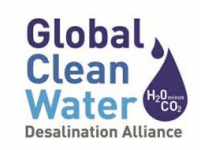 The Global Clean Water Desalination Alliance has set a goal for 20% of new desalination plants to be powered by renewables between 2020-2025.[13] Founded by the International Desalination Association, the alliance includes energy and desalination industries, water utilities, governments, financing institutions, academia, and R&D “with the goal to reduce CO2 emissions from existing water desalination plants and to scale up the use of clean desalination technologies through coordinated actions.”[14]
The Global Clean Water Desalination Alliance has set a goal for 20% of new desalination plants to be powered by renewables between 2020-2025.[13] Founded by the International Desalination Association, the alliance includes energy and desalination industries, water utilities, governments, financing institutions, academia, and R&D “with the goal to reduce CO2 emissions from existing water desalination plants and to scale up the use of clean desalination technologies through coordinated actions.”[14]
Globally, the current share of renewable energy used in desalination is around 1%.[15]
Pioneering governments are embracing this untapped potential. Saudi Arabia has brought forward its Vision 2030 target of generating 9.5GW of renewable energy to 2023.
In Western Australia, all new desalination plants must use renewable energy. From Europe to India, to China, many others are following their lead. These nations may be obliged to reduce emissions under the Paris Agreement on Climate Change. They are certainly driven by the humanitarian and economic crisis of water scarcity.
What kind of energy will they harness?
The renewable options for desalination
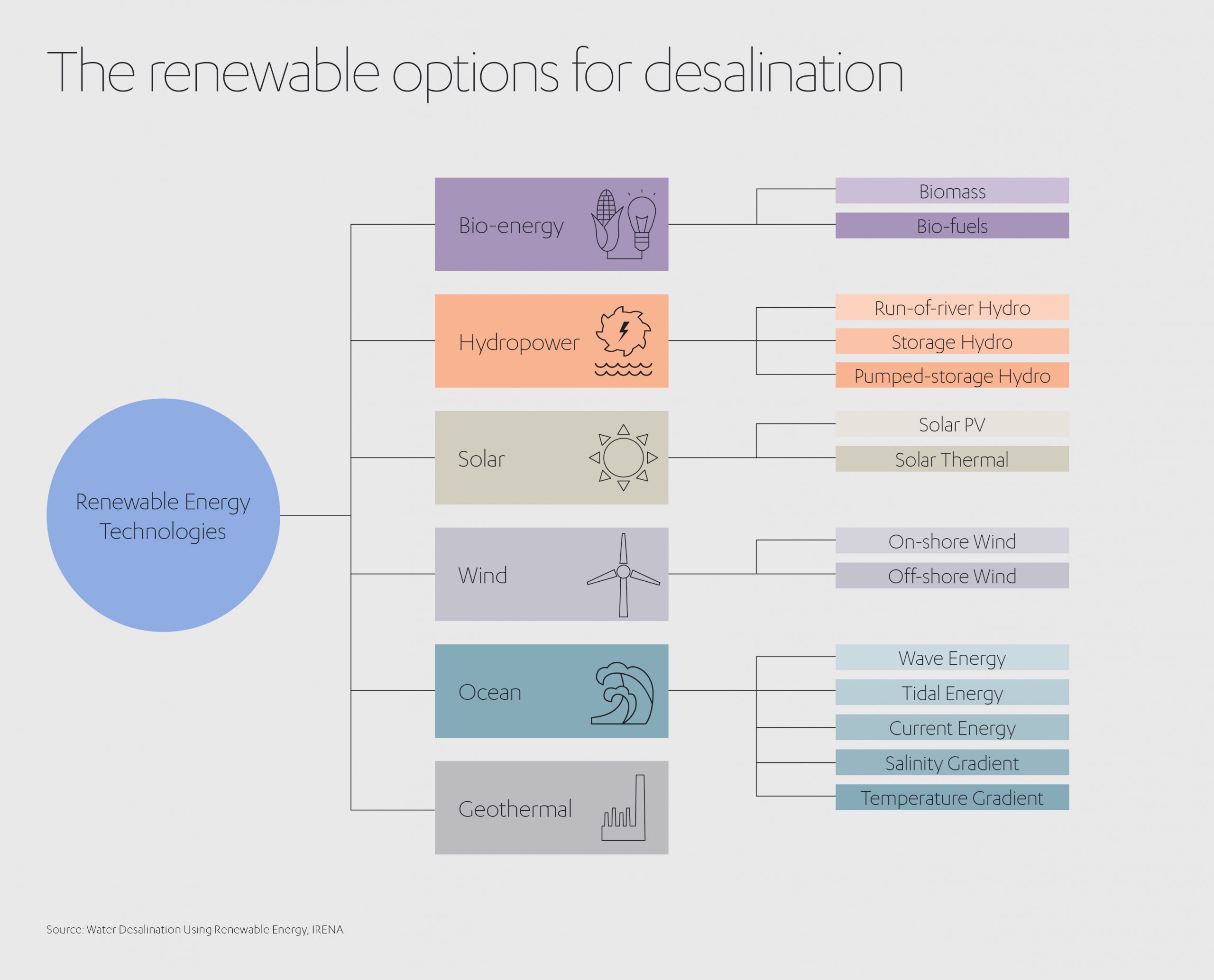
In theory, desalination can be powered by wind, wave, geothermal or solar energy. Each has its advantages and drawbacks, as outlined below.

Wind
Wind is a popular, established renewable energy source that can generate electricity for reverse osmosis desalination. Most large-scale renewable energy powered desalination projects are wind-powered.[16] Wind-powered desalination is particularly well-suited to coastal and island communities due to the proximity to the energy source, water source, and user population.
According to the International Renewable Energy Agency (IRENA), notable wind-based desalination plants include Gran Canaria (Wind-RO, seawater, 5–50 m3/d), Fuerteventura (Wind-diesel hybrid system, seawater, 56 m3/d), both in the Spanish Canary Islands and the Centre for Renewable Energy Systems Technology in the UK (Wind-RO, seawater, 12 m3/d).[17]
In Australia, the Perth Seawater Desalination Plant, the first of its kind in the country, is powered by electricity generated by the 80-megawatt Emu Downs Wind Farm. The wind farm contributes 270 gigawatt-hours per year to the grid, more than offsetting the 180 gigawatt-hour per year requirement from the desalination plant.[18] Similarly, the Sydney Desalination Plant is powered entirely by a wind farm, which has also increased the supply of wind energy in New South Wales by over 700%.
Wave
The seas contain immense kinetic energy. An average 4-foot, 10-second wave striking a coast puts out more than 35,000 horsepower per mile of coast.[19] Wave energy is difficult to harness,[20] but there has been a promising pilot in Western Australia. In 2014, Garden Island became the first “commercial-scale wave-powered project in the world to demonstrate both power and freshwater production from the ocean waves,” according to Water Technology.[21] A wave-powered desalination system is also planned for Cape Verde, off the west coast of Africa. The developer, Resolute Marine Energy, claims the so-called Wave20 plant will produce drinking water at a third of the price of conventional systems. The system harnesses wave energy to pressurize water and pump it to a treatment plant onshore, while a series of paddles move back and forth by the waves to create electricity which is used to filter the seawater.[22]
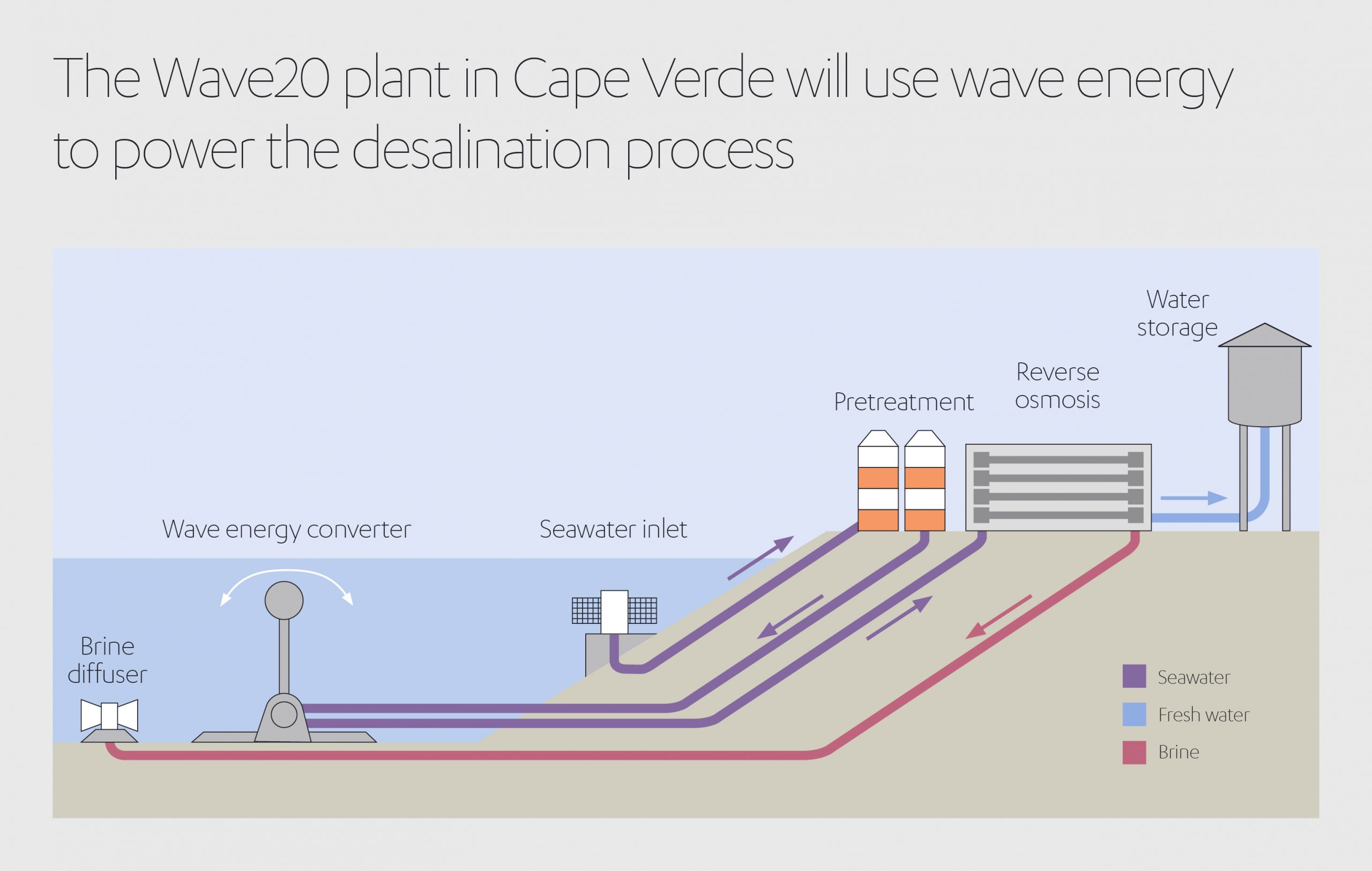
Geothermal
Geothermal energy can generate electricity and heat, making it suitable for both thermal desalination and reverse osmosis. A project in Milos Island, Greece, proved the viability of geothermal energy for desalination, producing 1,920 m3/d of fresh water for the local community at very low costs.[23] However, the process is significantly limited by location.
Solar
Solar power is widely regarded as having the most potential as a long-term, renewable energy source for sustainable desalination. There are two main solar-powered desalination types: Concentrated Solar Power (CSP) and Photo-Voltaic (PV). CSP generates direct heat and is typically used to evaporate water in thermal desalination. PV uses solar panels to generate electricity, which powers the pumps for reverse osmosis. According to the World Bank, “PV-based reverse osmosis solar desalination is the leading solar energy choice and is the main focus of further research.”[24]
Solar power is abundant in the sunny, arid regions that need desalination the most. These regions also tend to have large desert or wilderness areas which provide the space required to build new plants. According to Applied Water Science, “about 75% of thermal desalination sites are installed in Arab countries, and half of them are active in Saudi Arabia.”[25] Thermal desalination, powered by CSP, is not typically as efficient as reverse osmosis, but is better at treating the saltier water found in such regions, which can be as high as 45 or even 50 grams per liter (g/L). High salt concentrations can damage the membrane used in reverse osmosis.[26]
Most solar desalination projects are small to medium scale but getting bigger. The largest PV plant is in Saudi Arabia. Al Khafji was commissioned in 2017, and produces 60,000 cubic meters of potable water a day through reverse osmosis.[27] More are on the way. The Metito plant under construction in King Abdullah Economic City (KAEC) will launch with the capacity to produce 30,000 cubic meters of drinking water per day, expandable to 60,000 cubic meters per day.[28]
Abdul Latif Jameel is playing an increasingly significant role in addressing the desalination challenge through Almar Water Solutions.
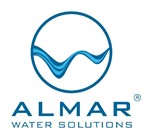 Part of Abdul Latif Jameel Energy, Almar Water Solutions is a specialist provider of technical capabilities for water infrastructure development, including design, financing and operation. It is a sister company to Fotowatio Renewable Ventures, (FRV), a specialist renewable energy business.
Part of Abdul Latif Jameel Energy, Almar Water Solutions is a specialist provider of technical capabilities for water infrastructure development, including design, financing and operation. It is a sister company to Fotowatio Renewable Ventures, (FRV), a specialist renewable energy business.
In January 2019, Almar Water Solutions was awarded the contract in Saudi Arabia to develop Al Shuqaiq 3 IWP, one of the world’s largest reverse osmosis desalination plants, located near the Red Sea city of Al Shuqaiq. When it is completed in 2021, it will deliver 450,000m3 of clean water each day.
This award winning US$ 600m investment is now celebrating one year since the first breaking of ground with more than 3 million safe man-hours logged on-site with some 2,300 workers.
Almar Water Solutions has also been contracted to produce Kenya’s first large-scale desalination plant in Mombasa, the country’s second largest city. Once operational, the site will deliver 100,000m3 of drinking water to more than one million people.
Sometimes the old ways are the best
Solar stills are the oldest solar desalination technology. They use solar energy to evaporate freshwater, condense it on the ceiling of an enclosure and collect it at the bottom. Solar stills are low-cost, low carbon, and low yield – making them better suited for smaller, low income, off-grid communities. Recent innovations have incorporated membranes[29] and metal-organic frameworks to filter out salt and other impurities.[30] Researchers at MIT and China have developed a “completely passive solar-powered desalination system,” which “could provide more than 1.5 gallons of fresh drinking water per hour for every square meter of solar collecting area.”[31]
Some projects in the area have been funded by the Abdul Latif Jameel Water and Food Systems Lab (J-WAFS) at MIT, cofounded in 2014 by MIT and Community Jameel.
Can sustainable solutions overcome persistent problems?
As well as the critical factors that need to be addressed for any desalination plant to be feasible, such as location, logistics and technology, renewable energy powered desalination facilities face an even bigger challenge – the stark reality of economics. Can renewables be a cost-effective alternative to fossil fuels?
Everything comes down to the supply of water, energy, and money.
Cheap, costly water
All desalination projects must source water cost-effectively and dispose of brine safely. Water is expensive to transport relative to its value, due to its density, and lower quality water requires pretreatment, which further adds to the cost. Fossil-fueled desalination is typically located near power plants out of town; new renewable projects can be closer to end-users, lowering the cost of distribution and risk of waste spillage.
Reducing the waste produced is also key. If desalination increases at the current pace, up to 240 thousand cubic meters of brine and other waste will be created per year by 2050. This waste can be harmful to the marine environment. Research indicates that integrating ‘adsorbent cycle technology’ (a chemical-based heat pump using porous, or ‘adsorbent’ solids), operated with solar or low-grade industrial heat, could save 99% energy and over 150% chemical rejection to the sea. For thermal processes, the hybrid approach will improve energy efficiency to 39% and will reduce over 80% chemical rejection.[32]
Unlimited, unreliable energy
The biggest obstacle to renewable-powered desalination is the intermittence of the energy supply. There are several strategies in continuous development to mitigate or overcome this issue:
Connect to the grid
Reverse osmosis relies on batteries to store electricity. Battery technology is continually improving but remains expensive, which means many plants need to access the grid to supplement their energy. When renewable plants generate more energy than they use, they can sell it to the grid. At a sufficient scale, this can even cover the costs of desalination. (Plants can also store excess solar energy in fresh water; when electricity demand is low, plants can simply produce more freshwater.)
Connecting to the grid provides peace of mind for countries that would like to invest in renewable desalination. Saudi Arabia and Bahrain, for instance, rely completely on desalination for their potable water and cannot afford to take any risks to supply. However, renewable-powered desalination will not be truly renewable while it remains dependent on an external energy source. Fortunately, there are two different approaches which might be able to reduce reliance on the grid. Maybe even entirely.
Thermal storage
Experts consider CSP to be the most viable solar technology due to its flat energy profile. CSP plants can deliver more consistent energy than PV plants, which are more affected by passing clouds, for instance. Put simply, if CSP plants can store enough heat, they can continue to operate when there is no sun – perhaps even overnight. Currently, most thermal storage systems are between 8% to 16% efficient. “In a decade or two, technical improvements are expected to increase efficiency to the 15% to 25% range,” according to the World Bank.[33]
A lot of research is being done in developing new heat exchange surfaces based on polymeric materials for thermal distillation plants. Such developments can substantially reduce the impact of the investment cost in the final cost of the fresh water.[34] Magnesium oxide (MgO) has been proposed as an efficient energy storage system to store solar thermal energy for off period operation. Heat generated during the day is released at night via exothermic adsorption, which can help to power 24-hour operation and lower carbon emissions.[35]
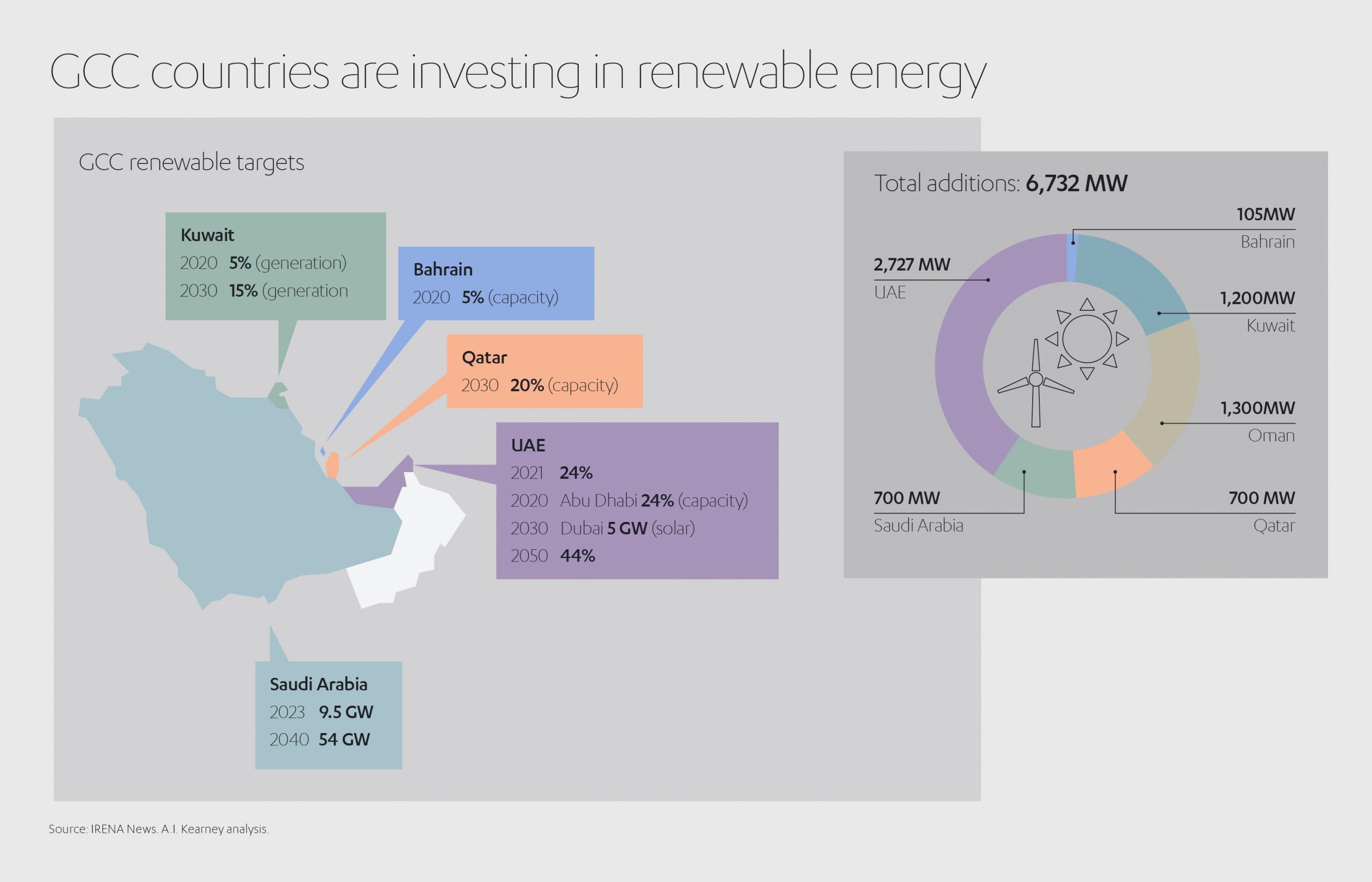
Hybrid plants
Different desalination techniques can be combined to increase the effectiveness of a single energy source. CSP co-generation redirects waste heat from the steam turbine which delivers electricity to the grid and uses it for low temperature multi-effect distillation (MED), a type of thermal desalination. Sundrop Farms, for example, uses Australia’s abundant sun for CSP and MED to produce fresh water and heating energy to grow tomatoes demonstrating the feasibility of large-scale hybrid renewable projects.[36]
Combining desalination methods helps to mitigate their drawbacks, too. For instance, PV-powered reverse osmosis plants are more efficient than CSP plants in theory, but only if they have better quality water. CSP plants are more effective at treating very brackish water. However, heat for thermal desalination must be located at the site of the plant. CSP does not work as well on the coast, where the sun is less powerful and salt air can cause corrosion. The solution is to pair an inland CSP plant with a coastal PV-powered reverse osmosis plant; it’s easy to transmit PV-generated electricity, while the thermal energy from CSP remains onsite.[37]
In Chile, FRV is combining wind, solar, and battery power to provide 24/7 renewable power regardless of weather, wind speeds, or daylight.[38] A hybrid renewable source such as this could provide unlimited ‘green’ power for desalination. The brackish groundwater of Texas is another prime candidate for desalination with hybrid wind and solar plants. Frequently afflicted by droughts, the state has abundant sun and produces the most wind power in the US.[39] It is also the lowest cost-region in the US for such projects.
Free-flowing innovation
Another way to overcome the energy challenge of desalination is to make the process itself more efficient.
Continuous innovation since the 1970s has reduced the energy consumption of reverse osmosis by a factor of 10, with costs expected to decline by up to two-thirds over the next two decades.[40] There are multiple ways to achieve this. The Mascara Renewable Water Plant in Abu Dhabi, for instance, uses an isobaric energy device to recover energy from the high-pressure brine.
Many researchers are focused on how to protect the reverse osmosis membrane from salts and biologically active material, thereby improving efficiency and reducing costs.[41] Xuanhe Zhao, a Professor at the Abdul Latif Jameel Water and Food Security Lab (J-WAFS) at MIT, has published research on a vibration-based membrane cleaning technology with the potential to improve the efficiency and working life of the membrane and reduce the costs of reverse osmosis.[42] The Mascara plant automatically flushes its membranes before sunset to avoid biofouling and adjusts water production to power supply throughout the day.[43]
Another project involving J-WAFS researchers, a passive solar-powered desalination system in China, could produce more than 1.5 gallons of fresh drinking water per hour from one square meter of solar panel area. The highly efficient system uses heat released from each stage to power the next stage. “Such systems could potentially serve off-grid arid coastal areas to provide an efficient, low-cost water source,” according to MIT.[44]
Forward osmosis is another promising avenue of research that could challenge traditional PV-powered reverse osmosis. Like reverse osmosis, forward osmosis also employs a semipermeable membrane, but uses a ‘draw’ solution, rather than hydraulic pressure, which requires much less energy.[45]
Burning through cash, or bright future?
Wind power is most economical compared to fossil fuels; solar power is typically twice as expensive when used for this purpose, according to a 2019, World Bank report.[46] However, the cost of solar-powered thermal desalination is expected to drop by 40% or more by 2025, and more than halve to US$ 0.90 per cubic meter by 2050.[47] Solar power is already the cheapest option in some remote areas where access to grid power is prohibitively expensive. The record tariff of 1.75 cents/kilowatt-hours (kWh) for the Sakaka project in Saudi Arabia demonstrates that renewable energy can more than compete financially with fossil fuels.[48]
“For me it’s clear: the future of desalination will be with renewables. It’s only a matter of time in the Middle East region. In less than five years, battery technology will have developed further and then we can have an independent solar and photovoltaic desalination plant. I have no doubt about that,” says Carlos Cosín, CEO of Almar Water Solutions, part of Abdul Latif Jameel Energy.
PV could outcompete diesel in Egypt
A case study in the International Journal of Economics & Management Sciences illustrates the potential of solar-powered desalination. The study showed how a conceptual PV-powered reverse osmosis plant could produce water at US$ 1.213 m3, compared with a variable cost of US$ 1.118-1.555/m3 for a conventional diesel power plant (according to fuel price variation).[49]
The case study was centered on Egypt, where Abdul Latif Jameel Energy recently announced the acquisition of 58 desalination plants. The country’s “excellent high average annual irradiance solar energy isolation of 2500 kwh/m2,” makes it well-placed for solar-powered desalination. It desperately needs it; the Nile is no longer sufficient to meet the country’s growing water consumption.[50]

Many renewable-powered developments are backed by organizations helping communities who cannot afford them. The non-profit GivePower supplies battery-driven solar-powered desalination systems to impoverished communities around the world.[51] One such desalination plant in Kenya has been providing up to 19,800 gallons of drinking water each day for two years, enough for around 25,000 people.[52]Aid is always welcome but charity alone will not solve the economic challenge of renewable-powered desalination. Governments must take action.
Renewable desalination demands new regulation
Mandates and subsidies helped to kickstart the renewable energy revolution in the early 2000s, developing supply chains and dropping costs. The same is needed for renewable-powered desalination.
According to the United Nations, more “innovative financial mechanisms” will be necessary to “support the sustainability of desalination schemes.” As the World Bank says: “support could be a combination of energy policy reforms to remove barriers such as eliminating fossil-fuel subsidies, the creation of an enabling environment for long-term power-purchase agreements and feed-in-tariffs, and support for initial investments and research and development related to renewable energy.”
Suggestions from the industry include a premium per cubic meter of water produced, or a guarantee from the state that they would purchase each cubic meter of “clean” water required by the public.[53]
Undiluted progress is possible
Water demand is increasing, and so are the effects of climate change.
Renewable energy powered desalination is more than an opportunity; it is a necessity. Fortunately, the obstacles are considerable but not insurmountable. With innovation, investment, and international collaboration, the world can quench its thirst for sustainable fresh water.
[1] http://www.fao.org/zhc/detail-events/en/c/880881/
[2] https://www.mckinsey.com/business-functions/sustainability/our-insights/water-a-human-and-business-priority
[3] https://www.who.int/news-room/detail/18-06-2019-1-in-3-people-globally-do-not-have-access-to-safe-drinking-water-unicef-who
[4] https://www.environmentalleader.com/2016/05/will-clean-energy-desalination-be-a-game-changing-water-fix/
[5] https://www.wri.org/news/2019/07/release-updated-global-water-risk-atlas-reveals-top-water-stressed-countries-and-states
[6] https://www.mckinsey.com/business-functions/sustainability/our-insights/climate-risk-and-response-physical-hazards-and-socioeconomic-impacts
[7] https://www.worldbank.org/en/topic/water/publication/high-and-dry-climate-change-water-and-the-economy
[9] https://idadesal.org/wp-content/uploads/2019/04/World-Bank-Report-2019.pdf
[10] https://www.intechopen.com/books/water-and-wastewater-treatment/desalination-with-renewable-energy-a-24-hours-operation-solution
[11] https://www.nationalgeographic.com/environment/2019/01/desalination-plants-produce-twice-as-much-waste-brine-as-thought/
[12] Energy Efficient Desalination, International Water Summit, 15-18 January 2018
[14] http://climateinitiativesplatform.org/index.php/Global_Clean_Water_Desalination_Alliance_(GCWDA)
[15] Water Desalination Using Renewable Energy, IRENA
[16] http://documents1.worldbank.org/curated/en/476041552622967264/pdf/135312-WP-PUBLIC-14-3-2019-12-3-35-W.pdf
[17] https://www.irena.org/-/media/Files/IRENA/Agency/Publication/2012/IRENA-ETSAP-Tech-Brief-I12-Water-Desalination.pdf
[18] http://www.awa.asn.au/AWA_MBRR/Publications/Fact_Sheets/Desalination_Fact_Sheet.aspx
[19] https://www.oceanenergycouncil.com/ocean-energy/wave-energy/#:~:text=Kinetic%20energy%2C%20the%20energy%20of,horsepower%20per%20mile%20of%20coast.
[20] https://e360.yale.edu/features/why_wave_power_has_lagged_far_behind_as_energy_source
[21] https://www.water-technology.net/projects/ceto-wave-powered-desalination-pilot-plant-garden-island/
[22] https://www.aquatechtrade.com/news/desalination/desalination-wave-powered/#
[24] http://documents1.worldbank.org/curated/en/476041552622967264/pdf/135312-WP-PUBLIC-14-3-2019-12-3-35-W.pdf
[25] https://link.springer.com/article/10.1007/s13201-020-1168-5
[26] https://www.solarpaces.org/blueprint-solar-desalination/
[27] https://www.water-technology.net/projects/al-khafji-solar-saline-water-reverse-osmosis-solar-swro-desalination-plant/
[28] https://www.metito.com/news-detail/metito-signs-a-project-worth-220-million-saudi-riyals-to-establish-desalination-plant-and-solar-electricity-generation-in-king-abdullah-economic-city/
[29] https://www.water-technology.net/news/technology-seawater-drinking-water-30-minutes/
[30] https://www.renewableenergymagazine.com/emily-folk/solar-technology-could-increase-global-access-to-20200821
[31] https://techxplore.com/news/2020-02-simple-solar-powered-desalination.html
[32] https://www.intechopen.com/books/desalination-and-water-treatment/renewable-energy-driven-desalination-hybrids-for-sustainability
[33] http://documents1.worldbank.org/curated/en/476041552622967264/pdf/135312-WP-PUBLIC-14-3-2019-12-3-35-W.pdf
[34] https://www.solarpaces.org/blueprint-solar-desalination/
[35] https://www.intechopen.com/books/water-and-wastewater-treatment/desalination-with-renewable-energy-a-24-hours-operation-solution
[36] https://www.alfalaval.com/globalassets/documents/media/here-magazine/34/here_34_how_to_grow_tomatoes_in_the_desert_mep_desalination.pdf
[37] https://www.solarpaces.org/blueprint-solar-desalination/
[38] https://frv.com/en/frv-awarded-540-gwh-in-chile/
[39] https://www.earthmagazine.org/article/can-renewable-energy-and-desalination-tackle-two-problems-once
[40] https://idadesal.org/wp-content/uploads/2019/04/World-Bank-Report-2019.pdf
[41] Treating A Moving Target: Harmful Algal Blooms
[42] https://www.alj.com/en/perspective/j-wafs-action-good-vibrations-reducing-cost-water-desalination/
[43] https://www.waterworld.com/international/desalination/article/16201273/desalination-renewables-a-long-engagement-without-the-wedding
[44] http://news.mit.edu/2020/passive-solar-powered-water-desalination-0207
[45]https:// www.environmentalleader.com/2016/05/will-clean-energy-desalination-be-a-game-changing-water-fix/
[46] http://documents1.worldbank.org/curated/en/476041552622967264/pdf/135312-WP-PUBLIC-14-3-2019-12-3-35-W.pdf
[47] http://documents1.worldbank.org/curated/en/476041552622967264/pdf/135312-WP-PUBLIC-14-3-2019-12-3-35-W.pdf
[48] https://www.waterworld.com/international/desalination/article/16201273/desalination-renewables-a-long-engagement-without-the-wedding
[49] http://www.sciencedirect.com/science/article/pii/S0011916402010913
[50] https://www.nytimes.com/interactive/2020/02/09/world/africa/nile-river-dam.html
[51] https://givepower.org/projects-2/
[52] https://bigthink.com/technology-innovation/solar-power-desalination
[53] https://www.solarpaces.org/blueprint-solar-desalination/





 1x
1x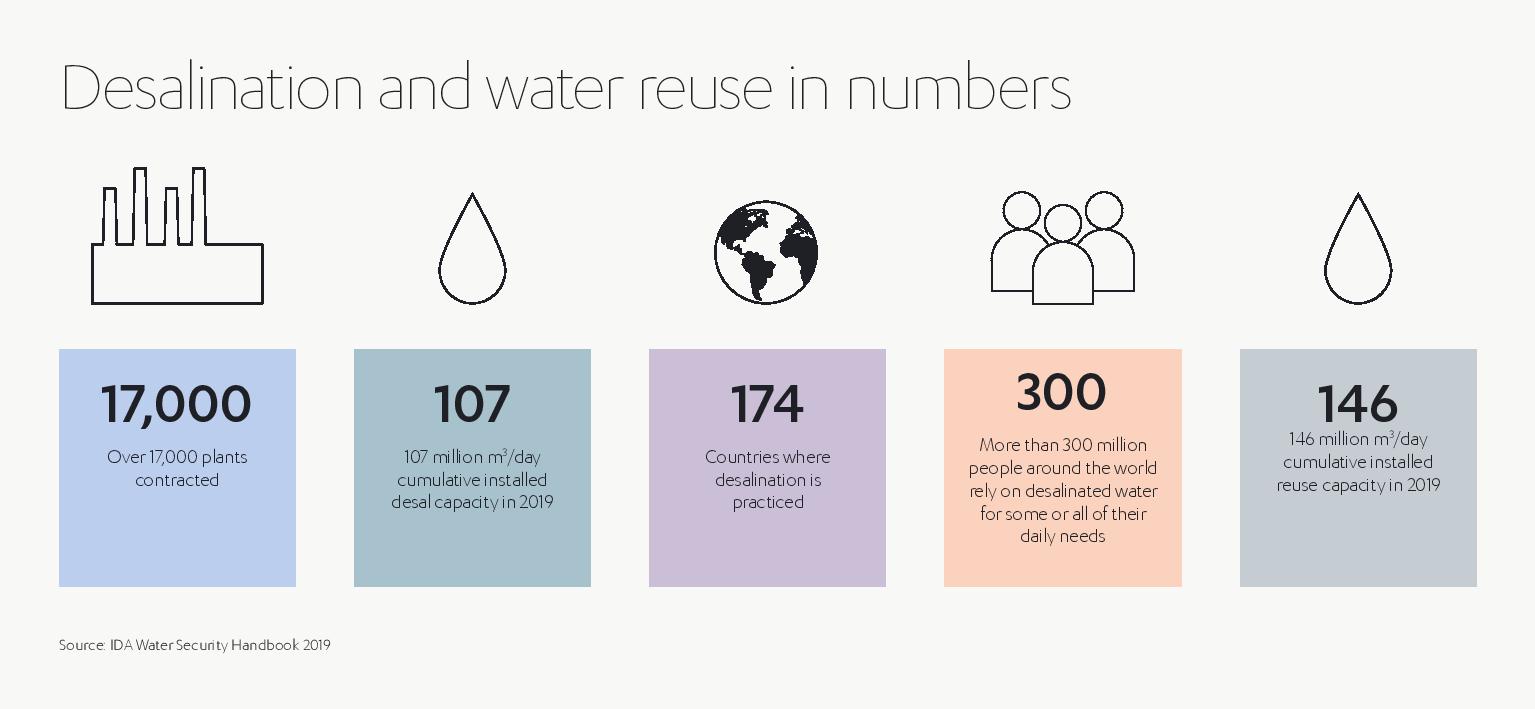


 Added to press kit
Added to press kit

